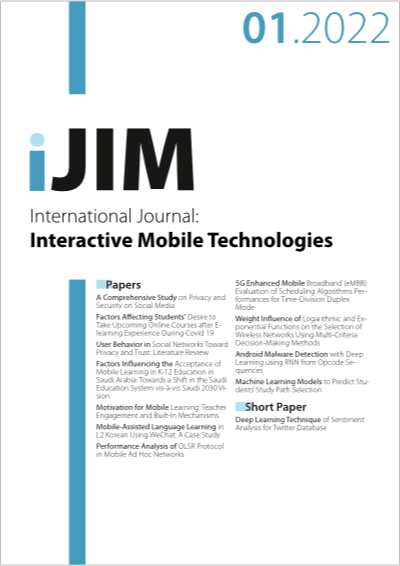Mobile-Assisted Language Learning in L2 Korean Using WeChat: A Case Study
DOI:
https://doi.org/10.3991/ijim.v16i01.24007Keywords:
Korean as a foreign language, Korean language learning, mobile-assisted language learning, WeChatAbstract
Abstract—Learners studying Korean as a foreign language have a long-standing problem in language learning: less exposure to the target language and a lack of communicative learning opportunities. This study attempts to explore how these challenges can be solved by incorporating mobile technologies—especially WeChat—into Korean language learning. By examining the implementation of the WeChat Project’s five components, this study reports on the advantages and disadvantages of using mobile technologies for students who learn an intermediate Korean language course at a liberal arts college in China. A total of 16 students participated in a one-semester study, and they were asked to complete an end-of-semester questionnaire and attend a follow-up interview. The questionnaire’s results revealed that students generally welcomed the WeChat Project and that they positively perceived the usefulness of the five components of the WeChat Project. In the interviews, the students reported four major benefits of using WeChat in their Korean learning: increased learning time, an acquisition of linguistic knowledge, the Korean language community, and the convenience of using WeChat. The disadvantages and suggestions for improvements are discussed.
Downloads
Published
How to Cite
Issue
Section
License
Copyright (c) 2021 Arum Kim

This work is licensed under a Creative Commons Attribution 4.0 International License.


